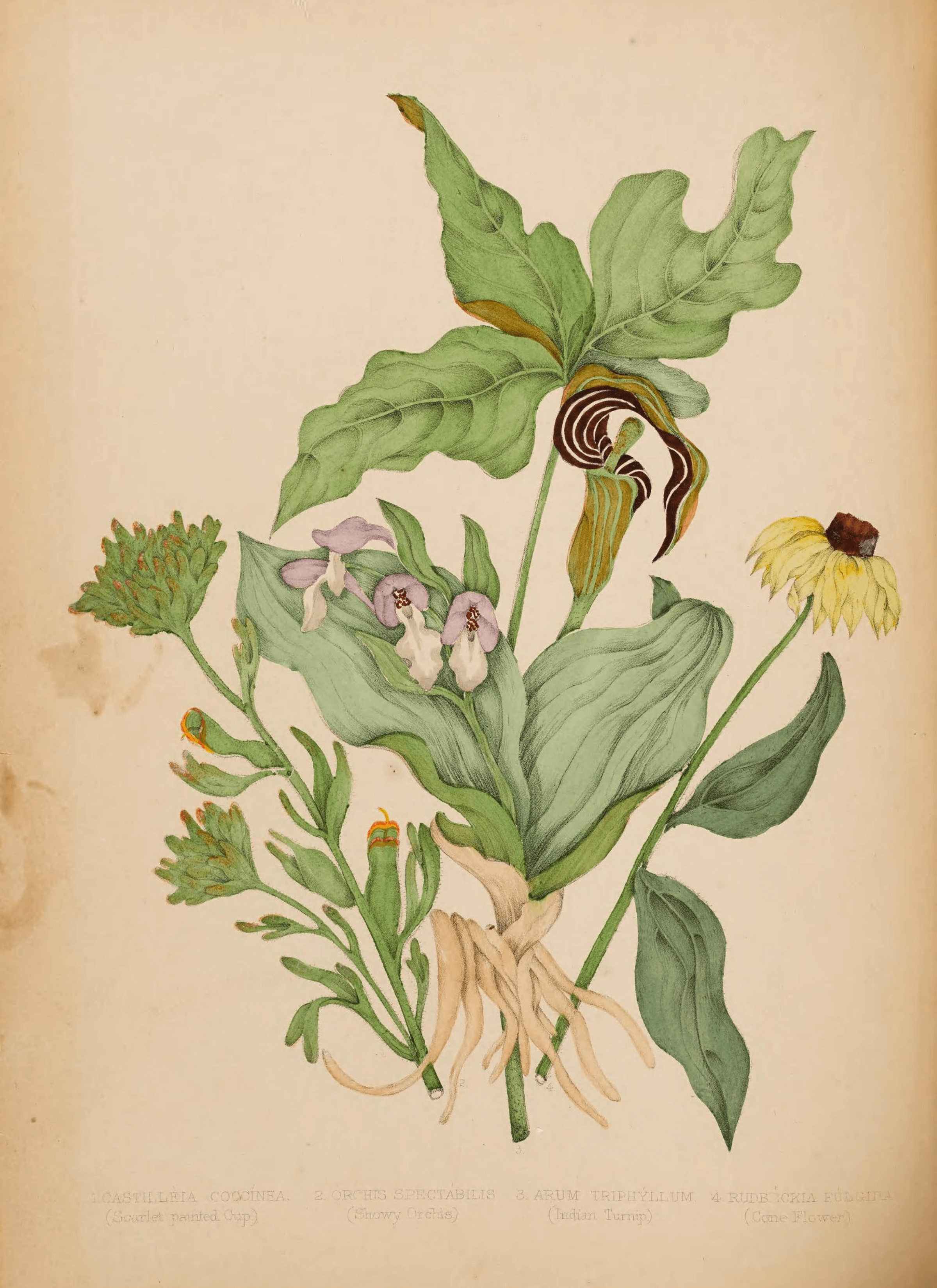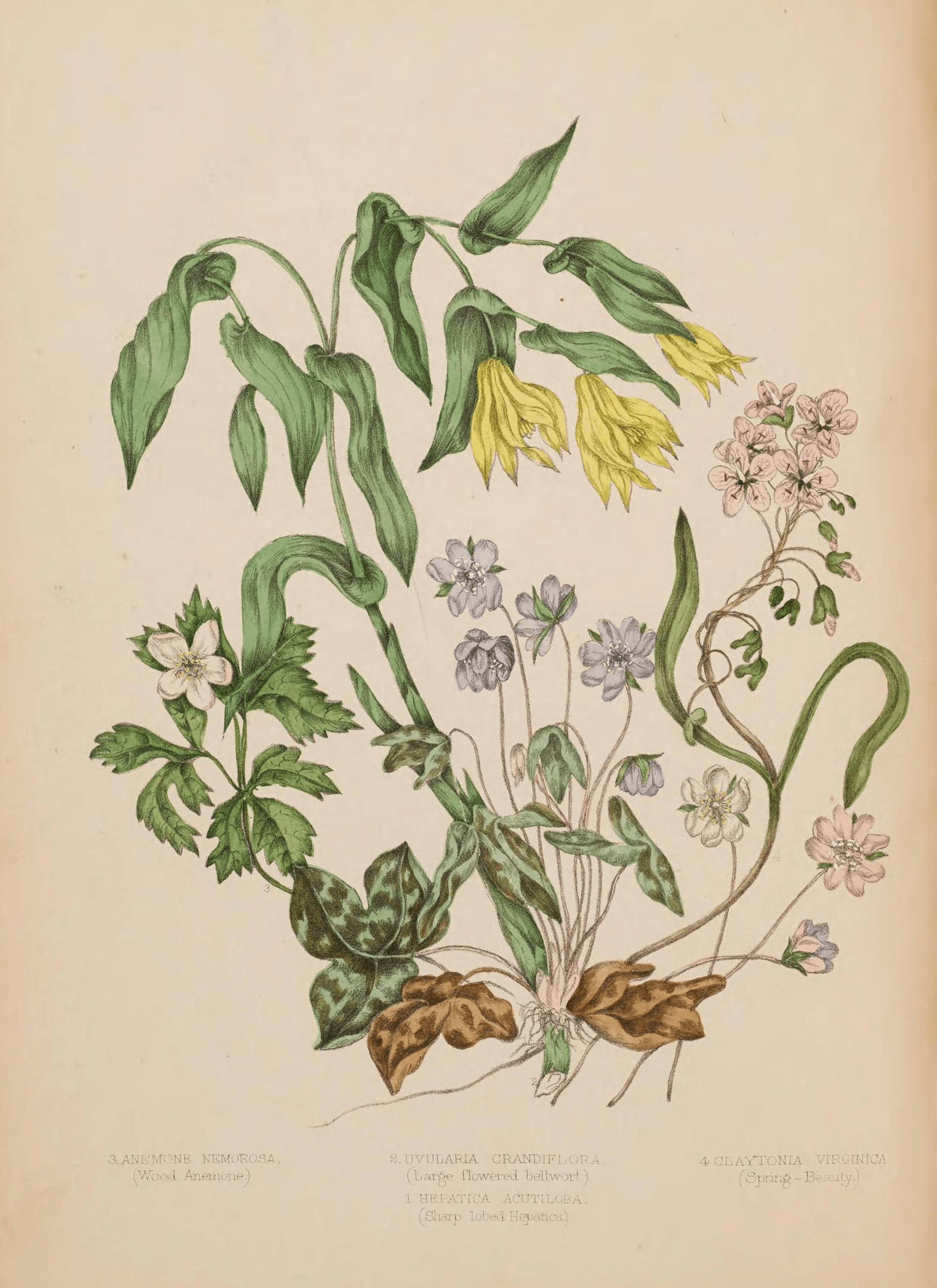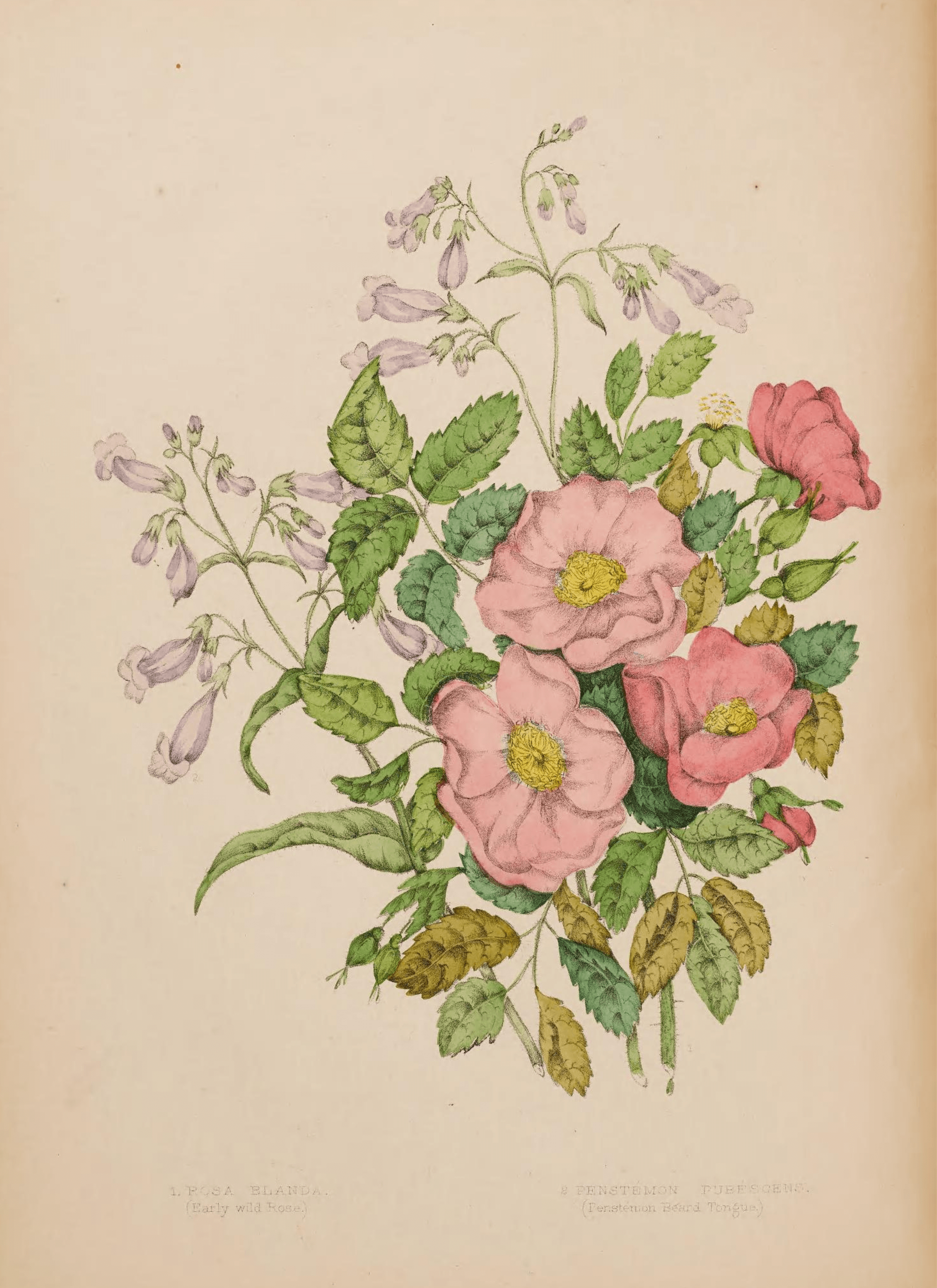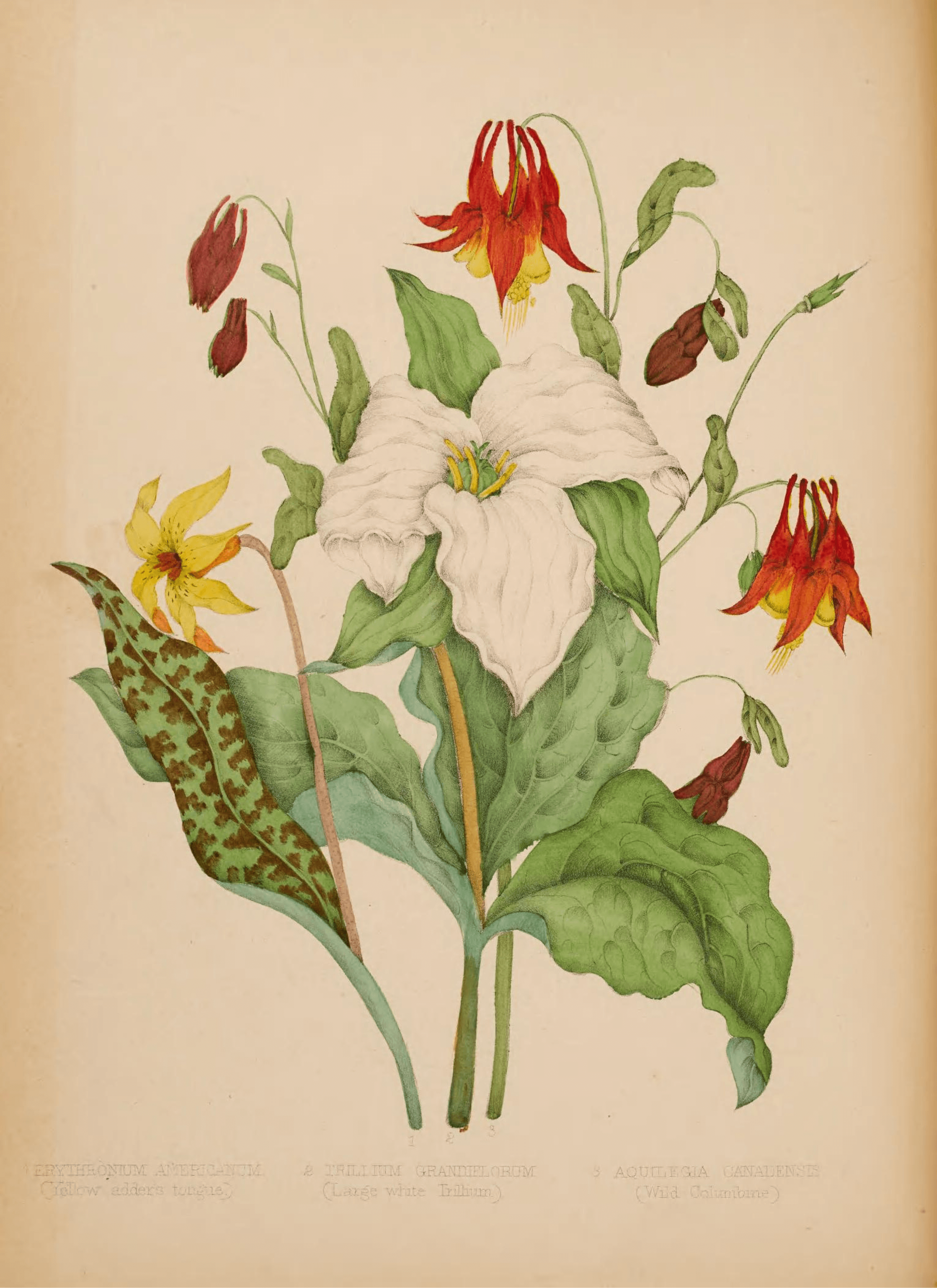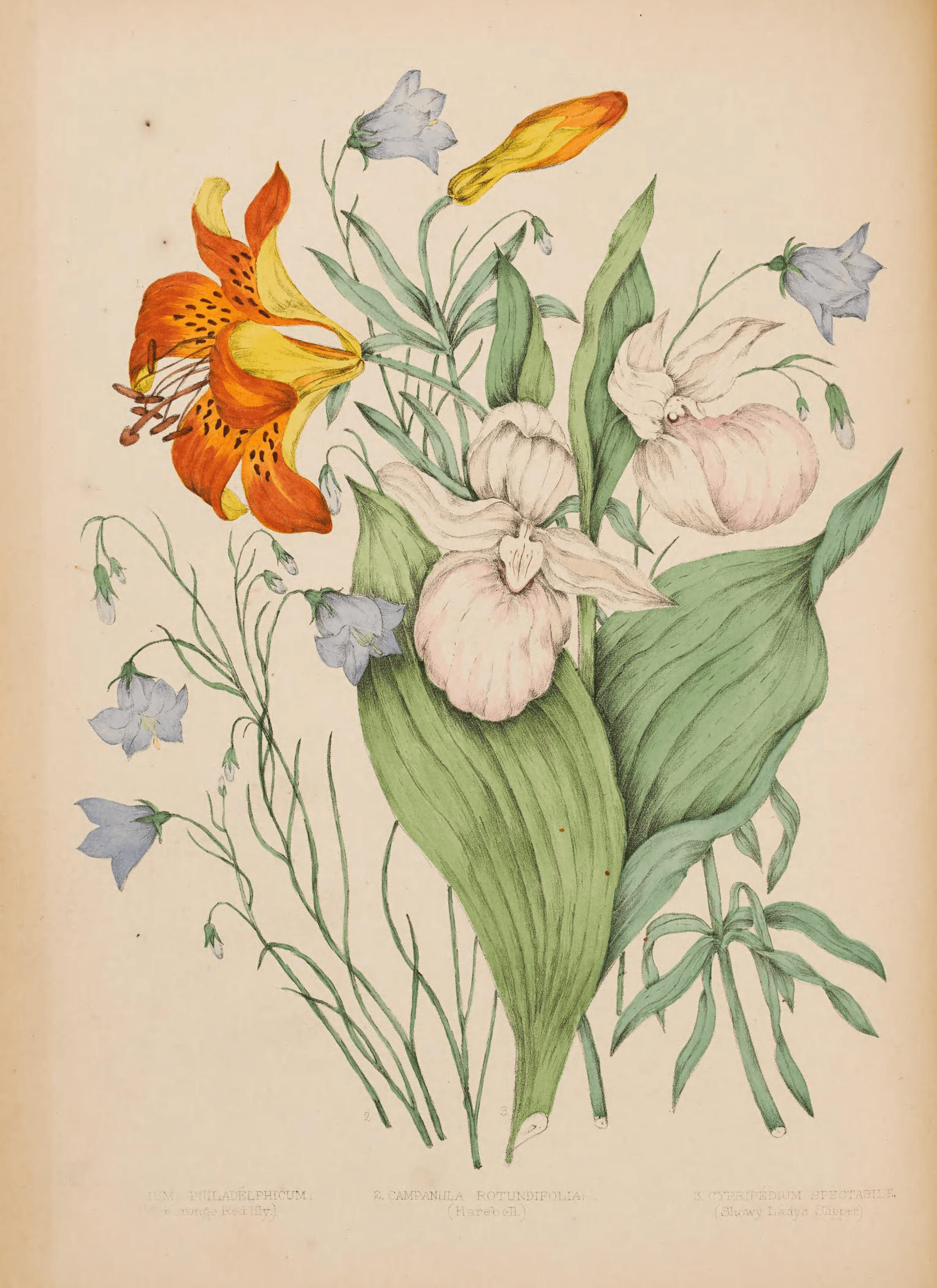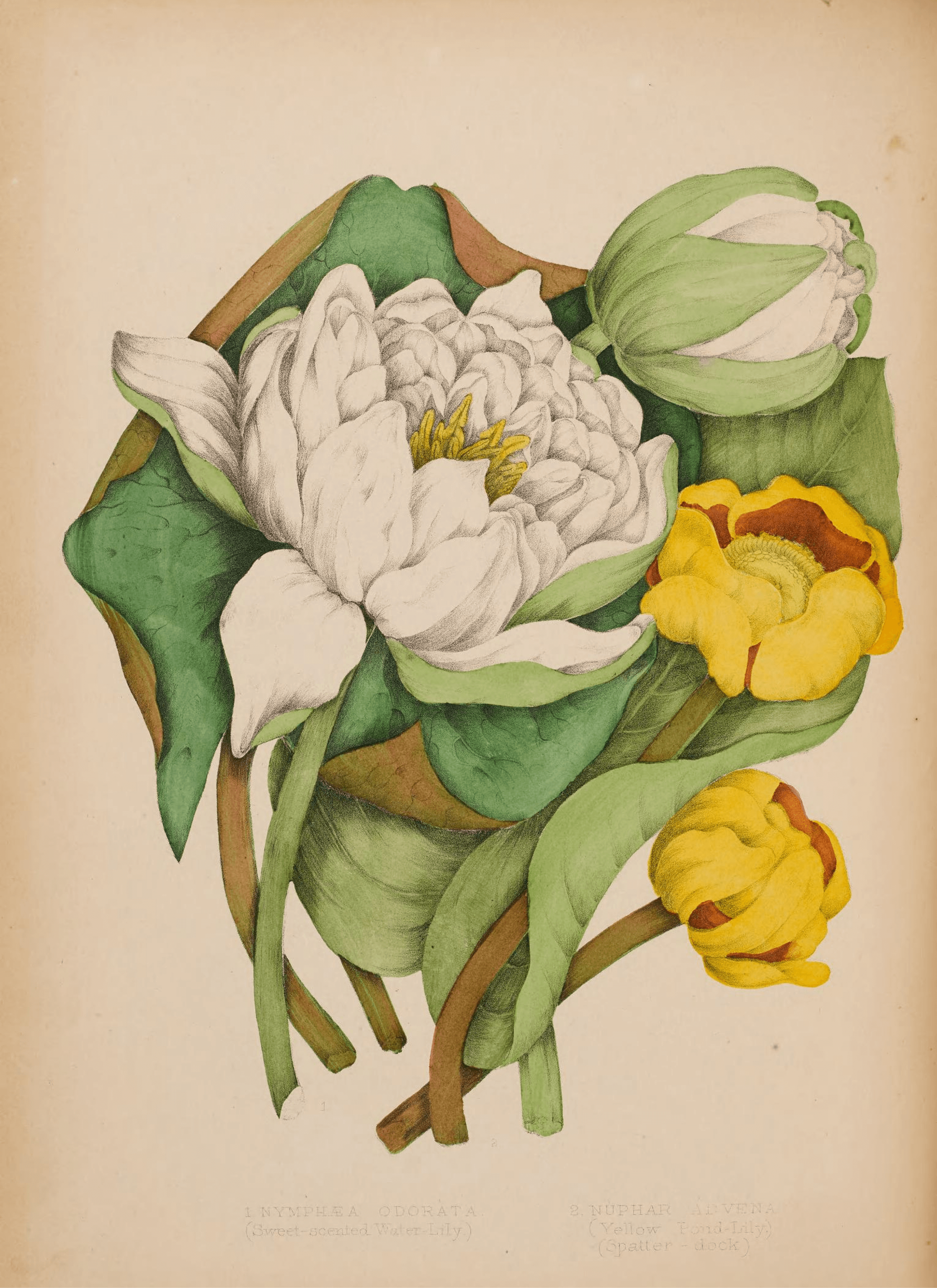Important pioneer artist known for her plant paintings and lithographs that were published in the 1869 book, “Canadian Wild Flowers”.
Agnes Fitzgibbon, née Dunbar Moodie (1833-1913), was born on a farm near Coburg, Ontario, the daughter of writer Susanna Moodie, younger sister of Catherine Parr Traill. At five years old, the family moved to Belleville on the eastern end of Lake Ontario. Fitzgibbon’s mother taught her how to paint flowers who famously published a romanticised history, “Roughing it in the Bush” (1852), depicting the harsh Canadian rural living conditions during the 1830s. Fitzgibbon married her first husband around 1850 and emigrated to the Canadian wilderness. Fifteen years later, Fitzgibbon’s husband died, leaving her to manage the house and home by herself. In 1863, Fitzgibbon began producing water-colour illustrations of flowers for her botanist aunt, Catherine Parr Traill. In 1866, putting the painting lessons her mother had given her to good use, Fitzgibbon joined forces with Traill to propose the creation of a book on Canadian wildflowers to publisher John Lovell in Montreal. He agreed on the condition that the book would be pre-subscribed to offset the costs. Accepting the challenge, the two ladies easily secured more than 500 subscribers.
Fitzgibbon took lithography lessons and, on borrowed stones, drew the title page and 10 floral plates, each plate with three different native wildflowers. William Chewett printed the lithographs and forwarded the 5000 sheets to be hand-coloured by Fitzgibbon, while her aunt wrote the botanical descriptions. Shortly before the publication of her book project, Fitzgibbon’s work was shown at the Philadelphia Centennial Exhibition (1864-1867). From 1867 to 1868, Fitzgibbon hand-coloured each illustration, sometimes aided by her children and neighbours. The first edition quickly sold out within the year and a second edition was requested and published the following year. Whilst selling subscriptions for "Canadian Wild Flowers" in Ottawa, Fitzgibbon met her future second husband, Colonel Brown Chamberlin, a lawyer and owner of the Montreal Gazette, who was later appointed the Queen's Printer.
Fitzgibbon and her aunt remained professional partners throughout Traill’s esteemed career; her paintings of Canadian plants and flowers were published in other books on Canadian flora, such as the nine full-page colour lithographs in Traill's “Studies of Plant Life in Canada,” (1885). One year later, Fitzgibbon’s paintings and those of her daughter, Geraldine Moodie, were exhibited at the Colonial Exhibition in London, England. Others took notice of her talent and future writers began to use her work, such as Eustella Langdon, who reproduced 11 of Fitzgibbon's watercolour paintings in her book, “Pioneer Gardens”, in 1972. In 1975, Fitzgibbon's artwork was shown by the "Dominion Government" at the Philadelphia Centennial Exhibition. In 1907, her watercolours were shown at the Women's Canadian Historical Society of Toronto in the East Hall of University College, University of Toronto. This was to be the last exhibition of her work held whilst she was alive.
Though she died in 1913 at the age of 80, Fitzgibbon’s children carried forward her legacy. Her heirs presented her paintings and copies of “Canadian Wild Flowers and Studies of Plant Life in Canada” to the University of Toronto in 1934–1935. These editions became part of the university's Department of Botany collection where they remain presently. Later, in 1966, the collection of books and paintings was transferred to the Rare Books and Special Collections of the University of Toronto Library and is now available in digitised format in the Chamberlin Collection in the University of Toronto. In 1977, the Royal Ontario Museum's Canadian Gallery exhibited Fitzgibbon’s work alongside that of Anne Langton’s in a show titled "Two Gentlewomen of Upper Canada".
